BACKGROUND
History of the Tamejavi Cultural Organizing Fellowship Program (TCOFP)
After several years of devoting a great deal of time and resources to organizing the Tamejavi Festival, the Pan Valley Institute decided to focus its attention beyond the frame of a bi-annual festival and more towards supporting immigrant cultural holders, oral tradition masters, and leaders and organizers in their own communities. In keeping with our popular education values, we decided to support and catalyze what already exists in immigrant communities instead of attempting to scale up our own cultural organizing through the festival. This ambition was realized through the Tamejavi Cultural Organizing Fellowship Program (TCOFP), launched in the fall of 2011. The inaugural program selected 10 fellows representing diverse immigrant and refugee communities from across the Valley. This first cohort spanned a wide range of ages, languages, skills, experiences and approaches to cultural organizing. Each one was committed to helping their community find a sense of belonging and build broader civic and political participation in Valley life. They all believed that the arts, creative expression and traditional practices compose the lifeblood of indigenous and immigrant cultures and have an important role to play in catalyzing broader political participation and power.
TCOFP, which occurred between 2011 and 2017, graduated 23 fellows and four apprentice fellows. They represented a multigenerational group of men and women from Mexican Indigenous, South and Southeast Asian, Palestinian, Pakistani and Iranian communities. An additional 200 people indirectly benefited from the program through their roles as learning group members.
TCOFP participants were required to:
• learn the basic principles of popular education, participatory action research and cultural organizing
• host cultural exchanges within and beyond their own communities
• form a local learning group that accompanied them through their participation in the fellowship
• conduct a community assessment and cultural inventory to gain a better understanding of pressing concerns, collective cultural assets, and the impact of migration and displacement on individuals, families and cultures in their community
• designed public cultural projects to mobilize local cultural capacities and address key issues based on the findings of their collaborative community assessment, fellows and working teams
• gain knowledge and skills to build community-based cultural engagement and arts participation among Central Valley immigrant communities and beyond
• conclude the program with a shared commitment to promote culture and artistic engagement as an entry point for broader immigrant civic participation
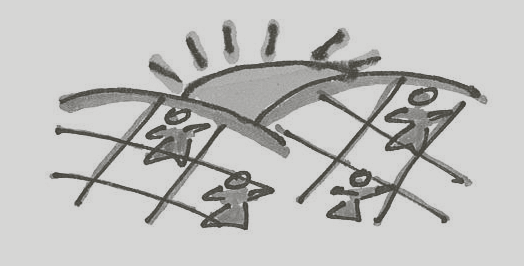

Principles
• Collective study and mutual learning lead to ACTION: “We don’t know things unless we take action on things”

Tips
• Even though there is a syllabus, participants must be flexible as this program is not a school
• Be adaptable to the cultural, economic and educational diversity of the group
References
• Community Assessment
• Cultural Inventory
• Glossary
• Popular Education Section How to Make it Work I
• TCOFP Section
BACKGROUND
Goals and Objectives of the Tamejavi Cultural Organizing Fellowship Program (TCOFP)
Goals of the Tamejavi Cultural Organizing Fellowship Program
• Increase the cultural organizing capacity of leaders within underserved immigrant communities in the Central Valley. Through their participation in the Tamejavi Cultural Organizing Fellowship Program, immigrant leaders expand and sustain cultural and artistic expression to create vibrant and engaged communities.
• To deepen and improve the ability of Tamejavi cultural organizers in finding creative ways to mobilize local cultural capacities and address pressing issues.
• Increase immigrant leadership in the Central Valley, giving people a voice in local, state and national issues.
• To continue building and sharing resources for the cultural organizing model initiated through TCOFP so that this work becomes well-established and sustainable.
• Improve the cultural organizing work through strengthening networks and encouraging collective leadership.
Objectives of the Tamejavi Cultural Organizing Fellowship Program
• Increase opportunities for emerging cultural organizers to participate in an 18-month TCOFP that will increase their capacity to promote community-based cultural engagement and arts participation among Central Valley immigrant communities.
• Continue testing, implementing and developing key components of the TCOFP for further replication within the Central Valley and beyond.
• Implement residential gatherings and training workshops, mentorships and cultural sharings throughout an 18-month fellowship program to increase fellows’ and their learning groups’ capacity to engage immigrants in creative endeavors that address relevant community issues.
• Create opportunities for TCOFP fellows to practice what they learned in the capacity building process and lead their community in developing arts and cultural performances, events and dialogues for diverse audiences.
• Produce cultural organizing toolboxes, documenting PVI’s knowledge, methodologies and practices developed over 20 years of work, and disseminate it to organizations/organizers with the Central Valley and beyond.
• Analyze, test and implement solutions based on community input. Based on the data analysis of TCOFP fellows community assessment PVI will produce one policy recommendation paper to serve as a tool for building alliances among TCOFP alumni, current fellows, local officials, and educational, cultural, art and public service institutions.
• Strengthen and sustain cross-cultural collaborations, connections, networks, and artistic and cultural practices that have emerged over the years of TCOFP implementation.
“As a Fellow of the TCOFP, I have had great experiences in terms of the cultural organization process and interaction with other fellows. I enjoyed how each fellow brought in a unique perspective of cultural values and belief systems to share. I learned a lot.”
Cher Teng Yang
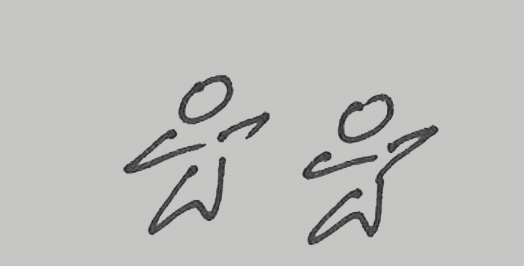

Principles
• All people, with or without formal education, have the ability to articulate and think
• People are active subjects, not objects
• We value immigrants as thinking beings and value development of immigrant leadership, including women and youth

Tips
• Constantly check your goals and objectives to see if you are on track toward program implementation
• If time constraints prevent you from completing one of your objectives, carry it over to the next cycle
References
• The Theory Behind Our Work booklet
• Glossary
• Popular Education Section How to Make it Work I
• TCOFP Section
BACKGROUND
The Role of the Tamejavi Cultural Organizing Fellowship Program (TCOFP) Coordinating Group
This tool provides suggestions for forming a coordinating group to support staff and fellows through the implementation of the program.
Following our practice of collective work for TCOFP, we formed a coordinating group. The group consisted of cultural organizers, artists, educators, and media experts who provided their expertise and played an active role in implementing the program objectives and activities. The coordinating group is a decision-making and advisory body.
A Successful Coordinating Group is committed to:
• understand the economic, political, cultural and social issues that shape Central Valley immigrant and refugee communities
• have a larger vision for social change and working towards making the Central Valley a more just and democratic place
• listen and understand the concerns, daily issues and dreams of immigrant and underserved communities, and believe that social change happens from the ground up
• make links and connections between people, places and organizations
• understand and respect the cultural values and practices of Central Valley immigrant communities
• believe in collective learning and collaborative work
• share popular education values and principles
• learn new and creative organizing strategies
• understand and value popular education principles such as building collective learning for social change
• appreciate the cultural and artistic life of their community, and understand and value the Central Valley’s cultural diversities
• following through for the program’s 18-month duration
• ensuring community issues are addressed
• bring people together
“As a Fellow of the TCOFP, I have had great experiences in terms of the cultural organization process and interaction with other fellows. I enjoyed how each fellow brought in a unique perspective of cultural values and belief systems to share. I learned a lot.”
Cher Teng Yang


Principles
• People work collectively (in groups), share experiences, and encourage participation

Tips
• The coordinating group should be as diverse as possible
• Group members should have connections to the community
• Group members must have the time to commit to the program
• Group members need to take ownership of the program
References
• Cultural Inventory
• The Theory Behind Our Work booklet
• Glossary
• Popular Education Section How to Make it Work I
• TCOFP Section
BACKGROUND
Characteristics of The Tamejavi Cultural Organizing Fellowship Program (TCOFP) Fellows
This tool shares characteristics we looked for when recruiting the Tamejavi Cultural Organizing Fellowship Program (TCOFP) fellows.
We focused on finding grassroots emerging leaders within the immigrant and refugee communities that:
• were open to learning new and creative organizing strategies
• understood and valued popular education principles such as building collective learning for social change, and were committed to making the Central Valley a more just and democratic place
• placed high importance on the cultural and artistic life of their community and understood the Central Valley’s cultural diversities
• committed to community work, but weren’t so overcommitted that they didn’t have time for the fellowship
• understood the daily issues in the community and had a larger vision
• made links and connections between people, places and organizations
• addressed community issues
• brought people together
• cared about community change
Profile of a TCOFP Fellow
Genoveva Galvez was born in Guerrero, Mexico, in a small town called Copanatoyac. At the age of 8, she immigrated to the United States with her mother and siblings. The youngest of five children, Genoveva was the first in her family to graduate from high school and attend college. She is currently working toward a bachelor’s degree in business administration at California State University, Fresno. Her experience working in the fields under harsh conditions showed her the importance of teaching immigrant farmworkers about their labor and human rights. As a teenager, she joined El Quinto Sol de America, a grassroots organization focused on raising awareness about the dangers of pesticides and securing clean drinking water for people living in rural Tulare County. Through her involvement with El Quinto Sol, she discovered the power of culture and art, and strongly believes that these disciplines play a pivotal role in social change. Being fluent in three languages (Spanish, English and Mixteco) is one of Genoveva’s biggest assets as a young leader as it allows her to speak on behalf of those who seldom are ignored. She is able to bridge the communication gap to help her community address the issues that impact them most.
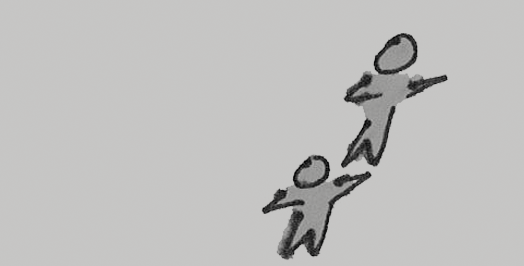

Principles
• Immigrant Leadership: We value immigrants as thinking beings and desire to enable immigrant leadership to emerge
• Priorities: The poor, oppressed and marginalized. We aim to accompany these groups through the process of reaching a deeper understanding of their power to change their conditions of oppression

Tips
• Provide this opportunity to grass root leaders that do not have or have limited access to resources
• Be prepared to confront communication challenges
References
• The Theory Behind Our Work booklet
• Glossary
• Popular Education Section How to Make it Work I
• TCOFP Section
BACKGROUND
The Tamejavi Cultural Organizing Fellowship Program (TCOFP) Nomination & Selection Process
This tool provides information about the Tamejavi Cultural Organizing Fellowship Program (TCOFP) nomination and selection process.
Nomination Process
Because of the uniqueness and commitment of the TCOFP, our staff and coordinating group decided to select fellows through a nomination process rather than an open call. The nomination process involved:
• identifying key community partners that had participated in our organization and had a deep understanding of our work
• developing a nomination form
• visiting the nomination partners to inform them of the program goals and implementation process, and to invite them to nominate a person who possessed the characteristics needed to be successful in the program
• meeting with potential candidates to educate them about the program and gauge their interest in participating as all candidates had to be willing to be nominated
• having the nominators submit nomination forms to the Pan Valley Institute and the coordinating group
• selecting 15 candidates from the nominations as semifinalists
Selection Process
• Semifinalists were invited to submit a personal statement outlining why they were interested in becoming a TCOFP fellow
• The coordinating group held one-on-one meetings with the semi-finalists
• The final selection process consisted of reviewing candidates’ personal statements and notes from the interview process. From there, 10 candidates were awarded the fellowship program.


Principles
• Priority is given to the poor, oppressed and marginalized. The program is aimed at accompanying these groups in the process of reaching a deeper understanding of how to change their conditions of oppression

Tips
• Make sure the nominators have a clear understanding of the commitment required by the program
• The nominator should convey as much accurate information as possible regarding program expectations to their nominee
References
• Cultural Inventory
• The Theory Behind Our Work booklet
• Glossary
• Popular Education Section How to Make it Work I
• TCOFP Section
implementation process
Implementing the Tamejavi Cultural Organizing Fellowship Program (TCOFP)
This tool shares the steps we took to implement the Tamejavi Cultural Organizing Fellowship Program (TCOFP).
Once the fellows were selected, they were invited to a one-on-one orientation. After doing a group orientation the first time, we learned doing it individually was more productive.
Orientation included:
• Introducing the Pan Valley Institute’s guiding values, principal and approaches
• A tour of the office and how to use resources available to them
• An introduction of the steps involved in the fellowship program
• Meeting one another, our staff and the different players involved in the fellowship program
• Sharing various communication protocols
• Discussing time management issues
Other implementation steps:
• Once all fellows completed orientation, they were invited to a residential gathering (see Residential Gathering Tool).
• After the residential gathering, one of the fellows’ first tasks was to form a learning group within their community. The Residential Gathering taught fellows about this process of forming learning groups.
• Within their learning groups, fellows were tasked with conducting a community assessment and cultural inventory.
• It’s expected that fellows visit with one another throughout the program.
• The program culminated with fellows submitting reports about the findings of their community assessments and cultural inventories. These findings were shared at the public event they presented during the Tamejavi Culture and Art Series (TCAS).
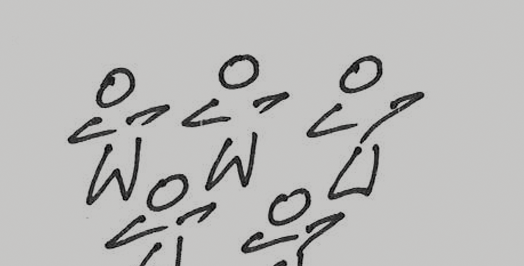

Principles
• Popular education is education
for transformation
• Provide a space where people feel safe to share life experiences

Tips
• Allow time for fellows to get to know each other
• We recommend a one-day orientation
References
• Cultural Inventory
• The Theory Behind Our Work booklet
• Glossary
• Popular Education Section How to Make it Work I
• TCOFP Section
implementation process
Hosting a Tamejavi Cultural Organizing Fellowship Program Residential Gathering
This tool explains the purpose of residential gatherings and provides examples of activities and trainings offered at these events.
Residential gatherings are retreats intentionally organized to remove fellows from their daily activities and bring them to a remote space in which they can avoid distractions in order to engage in deep learning and reflection. Residential gatherings also offer fellows a place and time to engage in informal interactions, build meaningful relationships, unlock creativity, acquire skills, and to practice and learn cultural organizing and popular education. Residential gatherings are only a first step in creating a space where people can reflect and build consciousness though deep dialogues centered around common problems that result in visions for solving such problems.
Each cohort of fellows participated in at least two thematic residential gatherings. The residential gatherings facilitated the process of building relations and interaction opportunities between the fellows. During the gatherings, fellows learned the different components and timelines of the Tamejavi Cultural Organizing Fellowship Program (TCOFP) learning journey. It helped them build confidence to share their experience with the public about the fellowship program and define their roles as fellows.
We discussed fellowship program activities, made a list of priorities, established timelines, calendars, and days they would come to the office. We also used the time for training, making art and group building spaces.
Examples of residential gathering activities and training:
• Creative lab
• Training on principles and values that guide our work
• Issue Analysis: Who is an immigrant? Who is a refugee?
• Engage in dialogues about community assessment and cultural inventory
• Building a shared agenda
• Community mapping
Glimpse of a residential gathering
On Friday, Pan Valley Institute staff arrive around noon to set up and prepare for the guests. Participants start to arrive after 2 p.m. to check in, get settled in their rooms and familiarize themselves with the venue. Fridays are usually more informal to allow space for participants to get to know each other and set the tone for the gathering. Activities include opening creative spaces and introductions to topics that will be the main focus the next day. Saturdays are more intense as this is when the trainings, presentations and deeper conversations take place. There are intentional “free time” spaces created to allow participants to take a break from the long day. Sunday morning is our time to reflect on the gathering as we share what we have learned. It is also when we plan our next steps before saying good-bye.
“I still remember the campfire night we shared. It was cool to stay up and chat. Everyone really inspired me and opened my eyes to a whole new world. Thank you all for sharing your stories, your culture, your wisdom and a part of who you are with me.”
Sokha Serey
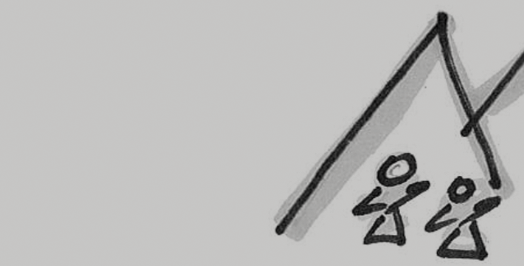

Principles
• Provide a safe and welcoming space
• Collective study and mutual learning build one’s own knowledge
• We place high importance on our surrounding environment and its impact on our ability to think, learn and act

Tips
• It is challenging for people to be part of a gathering from beginning to end, but it should be highly encouraged to avoid disruption to the group
• Because we intend to provide a safe and welcoming space, avoid unexpected guests. You may not be prepared logistically for the needs of the unexpected guest; i.e. an interpreter
References
• The Theory Behind Our Work booklet
• Glossary
• Popular Education Section How to Make it Work I
• TCOFP Section
implementation process
Tamejavi Cultural Organizing Fellowship Program Capacity Building Training
This tool describes a few of the capacity building trainings offered through the Tamejavi Cultural Organizing Fellowship Program (TCOFP).
There is a distinction between capacity building and popular education. To “build capacity” means to develop new or build upon current skills, traits, knowledge, abilities, and other facets related to increasing personal growth and character. This is unlike popular education engagement, which is a consciousness buiding process
Training Examples:
• Decolonization: Reach a better understanding of the socially constructed conceptual framework of oppression: ethnicity, race, gender, third world culture, excellence art expression/production vs. popular art expression/production. Provide an insight of the internal and external factors that impact our identity and movement building. Acquire tools for fostering processes of decolonization and liberation in their cultural organizing work. Acquire critical analysis tools for facilitating cultural integration, preservation and transformation when becoming members of new societies. Lastly, look at the opportunities and challenges of building commonality and unifying voices in intercultural contexts.
• Intersectionality: Xenophobia, Islamophobia and Social Exclusion – A discussion on how to build individual consciousness about colonization, islamophobia, xenophobia and social exclusions. What does this consciousness look like in the community? Are they separate issues, or do they coexist? How do we take it to public spaces?
• Media Training: Participants learn how to speak to the media in a way that makes audiences take notice. How to clearly and concisely define key messages. How to develop prepared responses to difficult questions and take control of media interview. Lastly, there might also the opportunity to have a discussion of ways to identify hate speech.
• Documentation & Visual Communication Training: Participants learn how to document projects, the importance of documentation, the current standard in media, best ways to tell a story, how to find a story, how to archive the work and ways to share the media online.
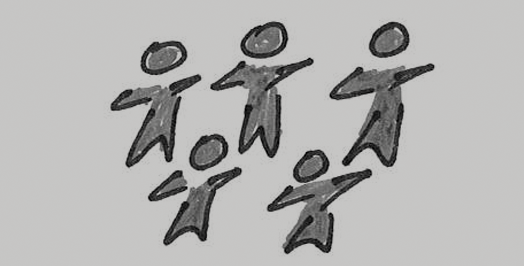

Principles
• Not teaching, but allowing participants to discover what they know
• The learning has to be relevant. We do not have a set curriculum because each group has to decide what they want to learn

Tips
• When we do bring in “experts,” they are representative of the communities we work with
References
• Decolonization Tool
• Glossary
• Documentation and Visual Communication Training
• Media Training
implementation process
Conducting a Community Assessment
This tool offers basic steps for conducting a community assessment as practiced by the participants of the Tamejavi Cultural Organizing Fellowship Program (TCOFP).
A central belief of the program was that participants not only learned the theory and principles of popular education, cultural organizing and participatory action research, but that the program offered opportunities for them to put those theories and principles to work. In order to do this, fellows conducted community assessments and cultural inventories intended to directly engage community members around issues that were important to them and created opportunities for them to partake in a creative learning process.
The community assessment included the following steps:
1. Formation of a learning group that included individuals from diverse backgrounds willing to volunteer their time and experience to help plan, assess and reflect about all aspects of the assessment.
2. Identification of key community contacts representative of various social, educational, cultural, traditional and non-traditional institutions that helped the fellows identify important community issues, needs, and readiness of the community to organize in action together. Key contacts included youth, elders, cultural holders, wedding and funeral ceremonial masters, shamans, community-based organization leaders, business leaders, media, etc.
3. Assessment of community issues and the community’s capacity to address them through informal one-on-one conversations, small group meetings, and first-hand observations.
4. Assessment of community assets such as cultural resources (performing spaces) and people (artists, traditional practitioners, arts administrators), as well as organizations and community-driven cultural activities (festivals and celebrations).
5. Reflection among team members and the fellows once information has been gathered on the community issues, followed by discussion on the most effective and appropriate approach to organize the community to come together to address the issue.
6. Evaluation of the cultural organizing process and activities based on the level of participation of the community, quality and efficiency of the work, satisfaction of community members with the work, and influence of external factors on the success of the work.
7. Determination of the impact and changes that have occurred in the community as a result of the of fellows’ cultural organizing efforts: changes in knowledge capacity; quality of discourse; shifts in attitude and values; increased capacity such as creative skills, leadership, and ability to take action; level of participation and mobilization; and changes in policies, systems, conditions and equity.
To ensure success in the community assessment, fellows employed several key practices: 1) Learning Groups; 2) Tools - Questionnaires, Community Dialogues, Observations and Surveys, and Media; 3) Trust-Building and Confidentiality; 4) Cultural Protocols; 5) Reflection; and 6) Documentation.
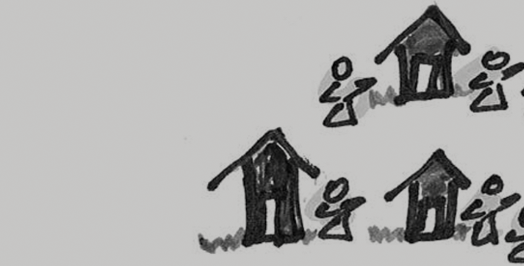

Principles
• Popular education is a conciseness building process that implies learning, knowledge and development for action

Tips
• A community assessment and cultural inventory must be rigorous, yet some flexibility is needed
• A community assessment is not academic research; it is intended to allow people to build their own knowledge
• Value peoples’ knowledge
References
• The Theory Behind Our Work booklet
• Glossary
• How to Make it Work I
implementation process
Tamejavi Cultural Organizing Fellowship Program Community Assessment Guide
This tool provides the key steps that guided participants in the Tamejavi Cultural Organizing Fellowship Program (TCOFP) while conducting their community assessments.
A community assessment offers opportunities to involve community members in reflection that enables them to identify issues that most concern them, as well as available cultural resources that can illuminate and stimulate action around those issues. This reflection will be both one-on-one as well as in groups.
Steps for Conducting a Community Assessment
1. Form a learning group
2. After learning group is formed, decide the purpose for conducting a community assessment
3. Identify key community contacts to help you
4. Identify important community issues that need to be addressed
• assess how ready the community is to take action to address them
• prepare a cultural profile of the community
• determine who is ready to assist in organizing action
• identify opportunities for reflection
5. Inform the community about your community assessment
6. Assess community issues and the community’s capacity to address them
• Amongst the things you will talk about with people during your community assessment are their observations about the problems that require community action
7. Decide the approach/methodology for the community assessment
• Questions you will ask
• Story telling
• Observation
• One-on-one meetings
8. Reflect upon the information gathered to decide on cultural action
9. Determine the impact of your community assessment and action
“Organizing begins at home…
Ask the questions that are at the center of your own lives. Ask them yourselves…
Think together and you will find the wisdom to go forward.
It’s not as complicated as it seems.”
Cesar Chavez, 1966


Principles
• We believe in the dignity of people’s experience and knowledge, including womwn and youth, and those who may not speak english, read or write

Tips
• Community assessment is not an academic researsh yet do not dismiss values of data gather
References
• Glossary
• Participatory Action Research Folder
implementation process
Community Assessment Reflection
This tool presents a guide we developed to help participants of the Tamejavi Cultural Organizing Fellowship Program (TCOFP) document their experiences, lessons learned and the challenges they faced when conducting their community assessments.
I. BACKGROUND
Based on your findings, present a picture of your community and its story. What should your community and others take from that story? Keep in mind that one of the intentions of doing a community assessment is to document your community story and share that story with others.
II. LEARNING GROUP ENGAGEMENT
Describe the extent to which your learning group participated in the community assessment.
III. APPROACH/METHODOLOGY
Describe which of the following approaches you took for conducting the community assessment: one-on-one meetings, interviews, observations, story circles, community forum, focus group, survey. What did you tell people when you approached them for the community assessment? Share some of the key questions asked. How many people did you talk with? Did you get their contact information?
IV. DOCUMENTATION
Describe the way you documented the information while conducting your community assessment.
V. KEY FINDINGS
List some of the key findings and discoveries from the community assessment. What process did you use to gather information? If you decided to focus on a particular concern, why and how did you arrive at this conclusion? Based on your findings, what is the community story you would like to share?
VI. COMMUNITY LEADERSHIP AND CAPACITY FOR TAKING ACTION
Talk about your community leadership or lack thereof. Are there any leaders in your community who can provide vision, direction and promote actions for addressing social and cultural issues? How do people in your community express/communicate their social and cultural concerns? Or do they express their concerns at all? Talk about the extent to which cultural values motivate people and supply vision to address their concerns. Describe your community leadership, creative skills and civic engagement for addressing concerns. Talk about the level of community participation and mobilization to address their concerns.
VII. LESSONS LEARNED
List some of the lessons learned while conducting the community assessment
VIII. IDEAS FOR ACTIONS FOR CHANGE
List ideas for actions to promote change you heard while conducting the community assessment. Describe the ability of your community to change policies, systems, conditions, or access to resources in order to achieve change. If this is not happening, why?
IX. CHALLENGES
Did you encounter cultural protocol you had to follow that might have presented challenges for doing the community assessment? For example, it might be that people in your community are not used to having dialogues about the issues they face. List any other challenges you encountered while conducting your community assessment

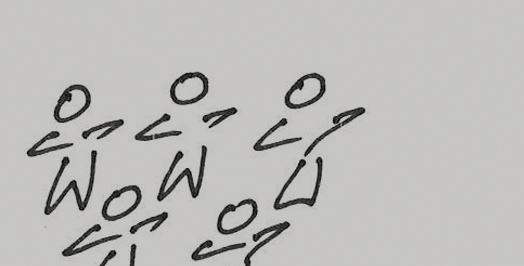

Principles
• We believe that through collective and individual learnings, sharings, reflection and action, we can transform ourselves and our communities, to improve the world in wich we live

Tips
• Sometimes people have challenges capturing information and this tool provides guidance for capturing information
References
• Glossary
• Participatory Action Research Folder
